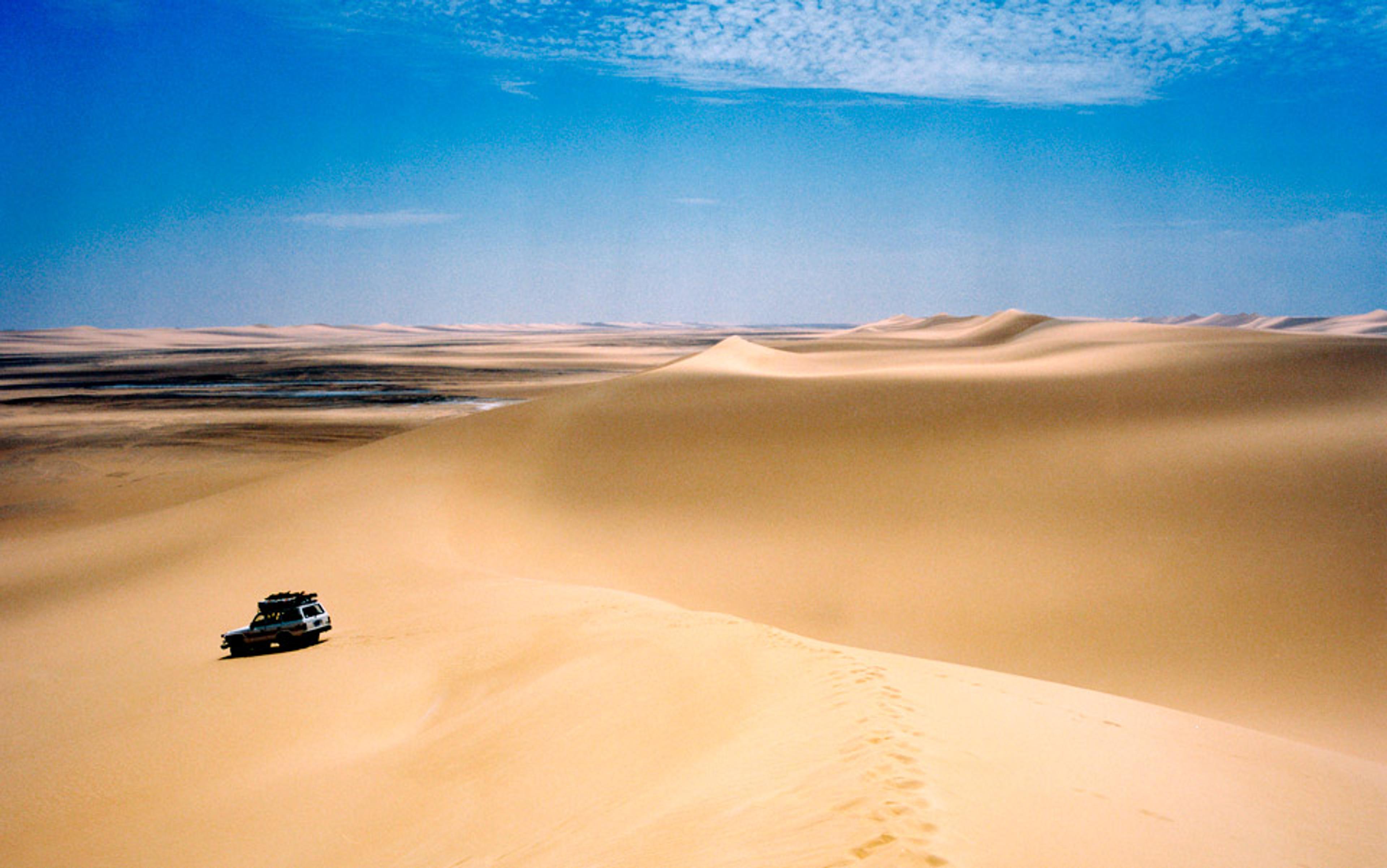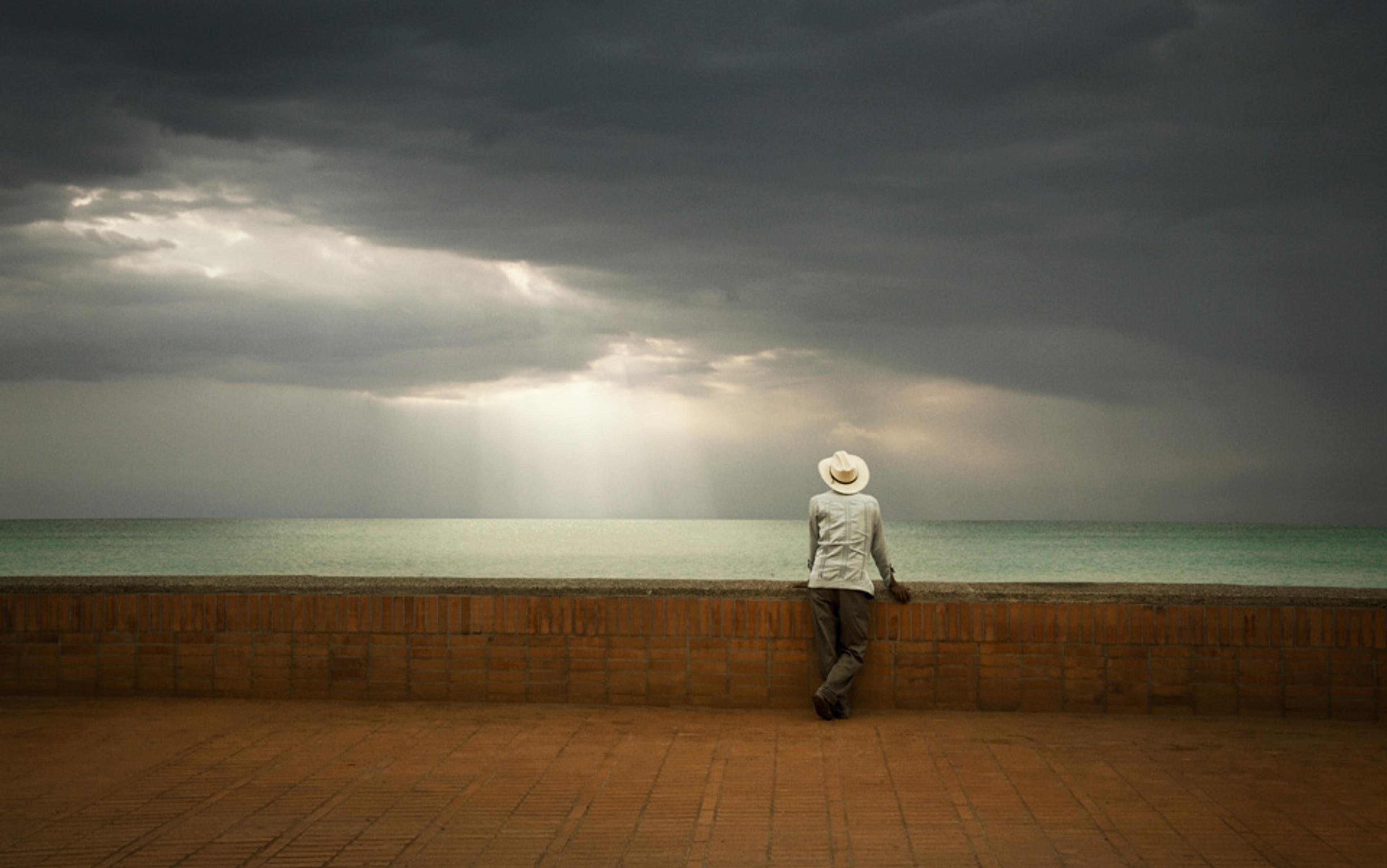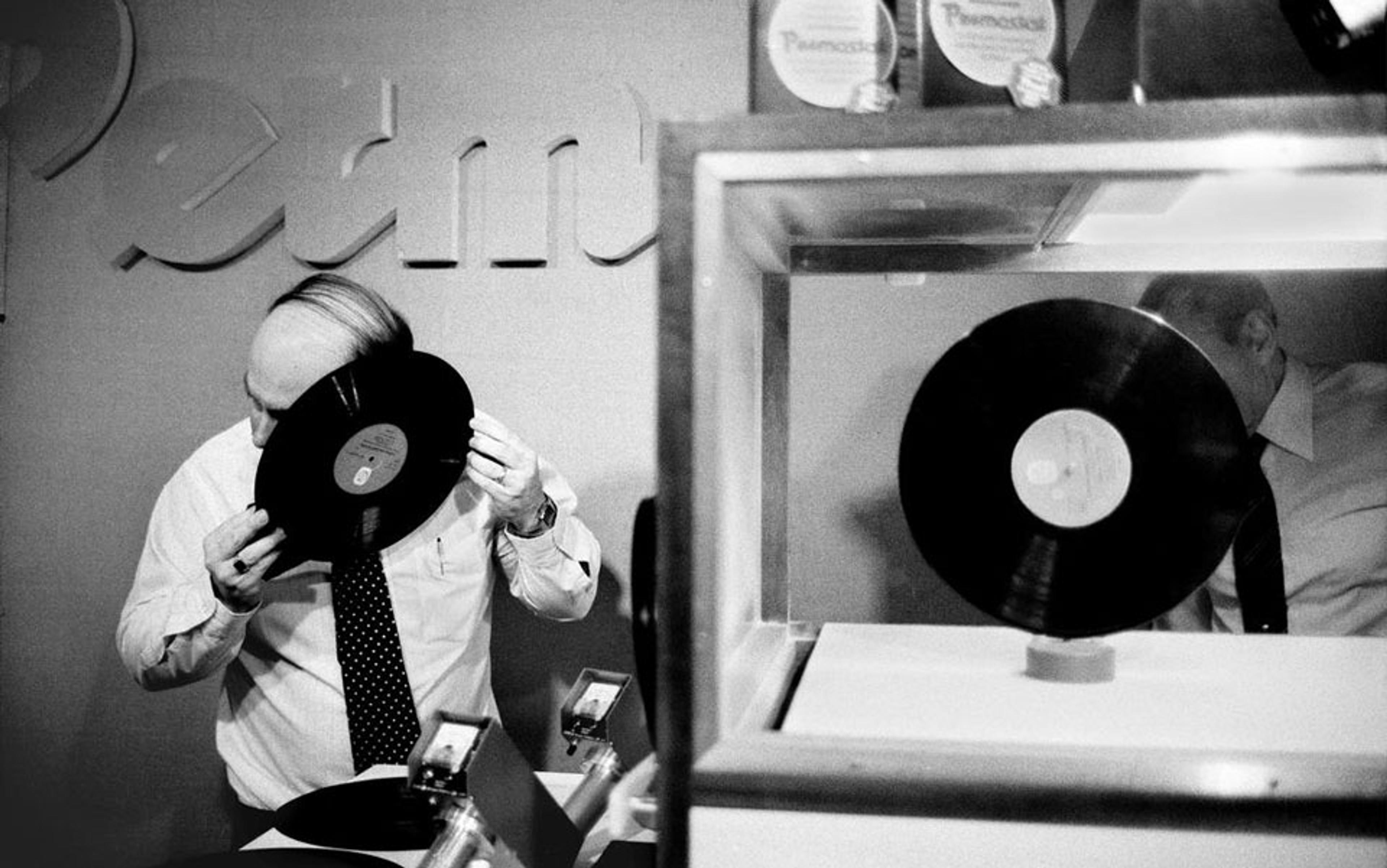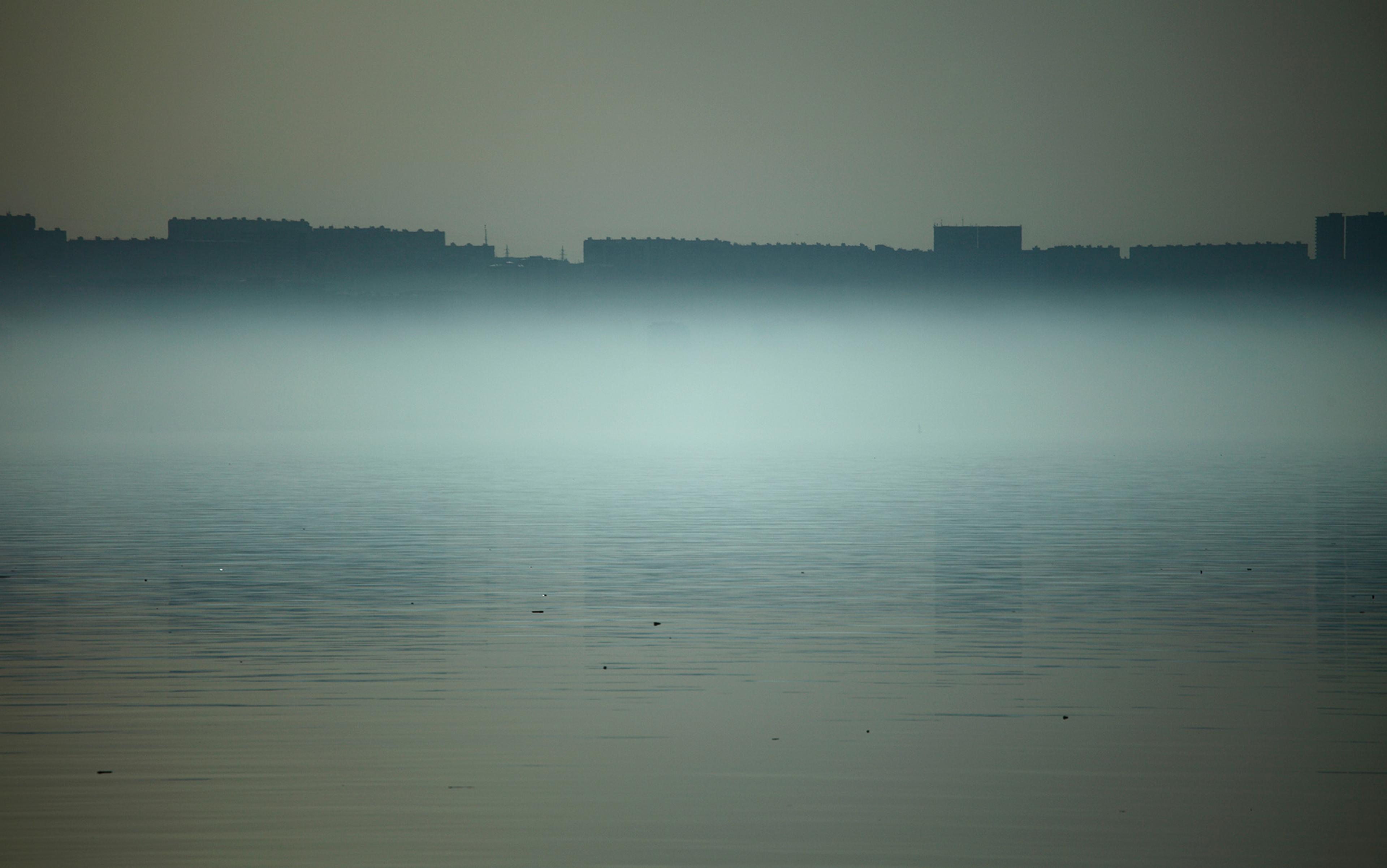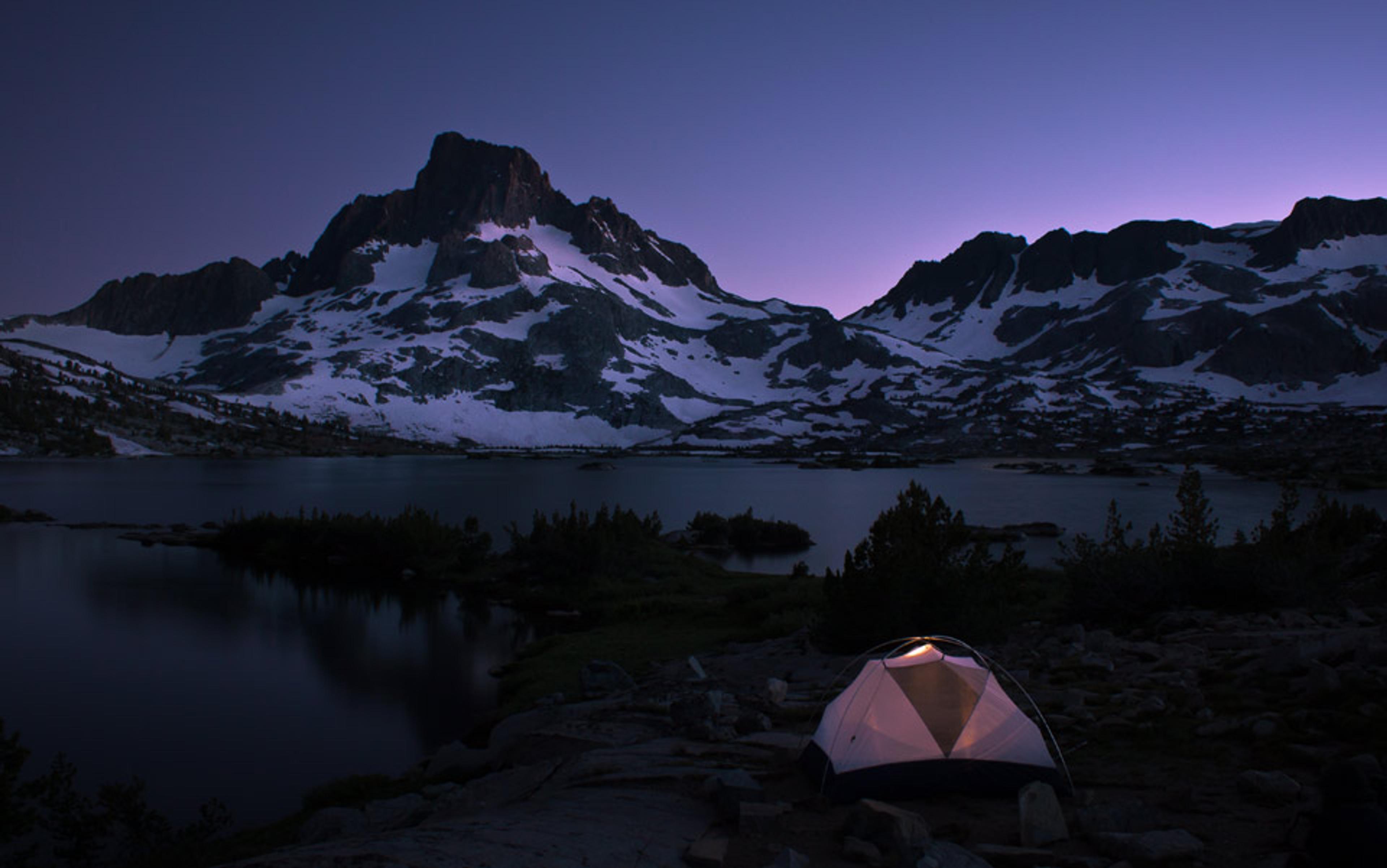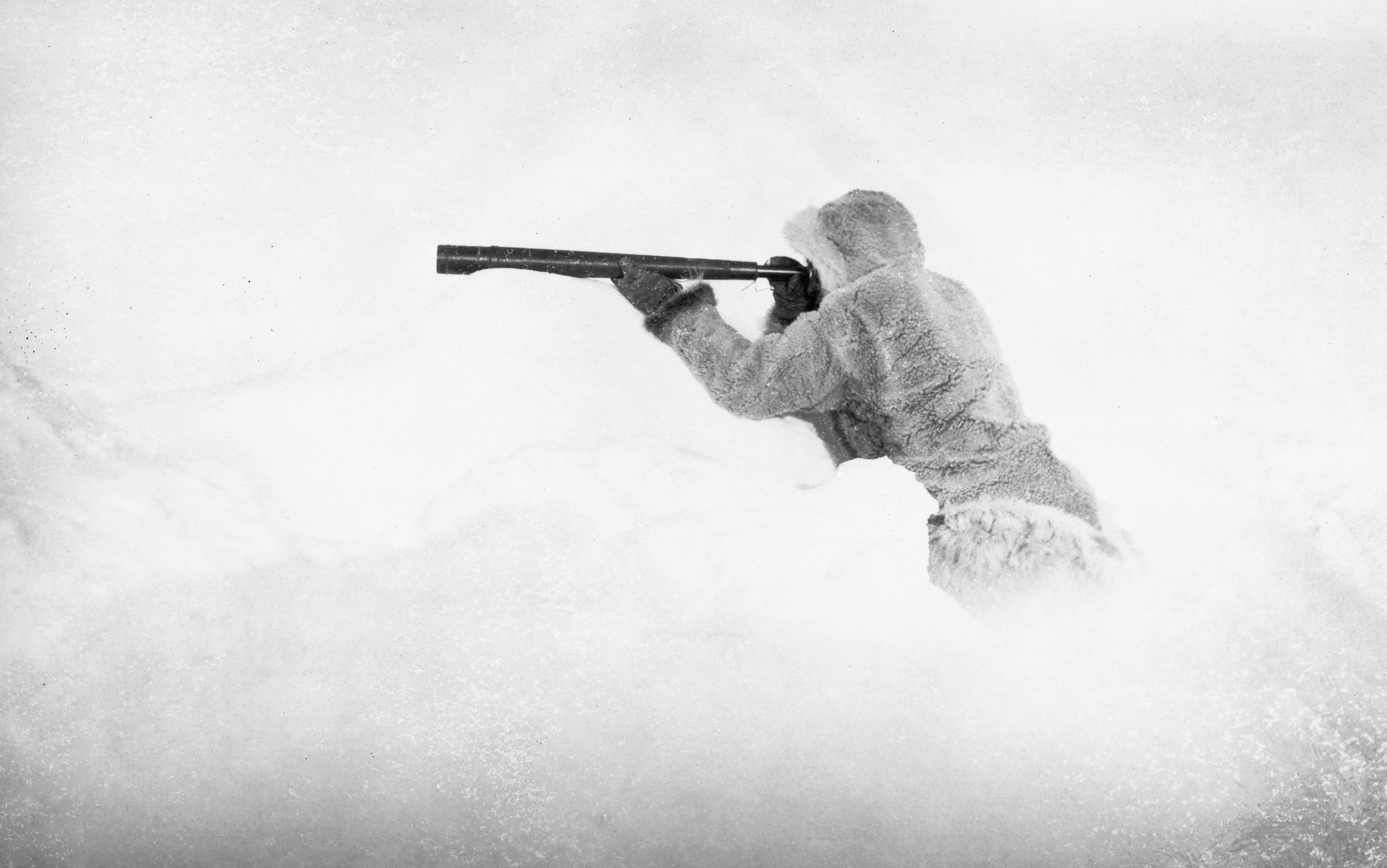By the twisted, paradoxical nature of things, a 4x4 with a throbbing engine — the 4.2 litre non-turbo diesel in a Nissan Patrol or Toyota Landcruiser — is the best way to experience the single most entrancing characteristic of the desert, the one that sucks you in and leads you to all the others you had only glimpsed or imagined before: that is, the silence. The rattly, combustion-wheezing, air-filling noise of the car stops with a shudder and a grunt, and the silence rushes in to fill the vacuum. You can feel it sucking away from the ear not air but something finer, some granular constituent of the ether, maybe the secret ingredient of dark matter … Whatever it is, it gets sucked away, leaving your hearing more acute but with less to listen to. There is the gentle click of the bonnet metal contracting. The slamming of the door by the last person getting out. The sound of bare feet squashing out sand in a few exploratory steps. And then, nothing.
If you walk (and after the engine stops, there is little fun in staying in the car), you find that answers appear to all the forlorn questions you had long ago given up expecting an answer to. The answer comes! But it might not be in words. That’s the craziest thing: to ask a question in words and receive a satisfactory answer that cannot be converted back into words without losing the essential ingredient.
From my earliest youth, I have always believed that the Sahara is the big one, the Everest of deserts — super-arid and super-empty. You can’t really walk out into it. All towns, all villages kind of bleed into it through an ugly hinterland of square irrigated patches and ditches whose banks are white with salt, and odd lobotomised palms and clusters of acacia with a donkey or goats hiding in the speckled shade, making a noise. So you take a car. It whizzes you far out, though in fact three or four kilometres is enough by day. (You might need to go further at night. I’ve seen city lights glowing under the horizon 60km into the desert on a moonless night. It can spoil things, but not always.) Then the engine stops. The adventure begins. Every journey made for the first time is an adventure.
There is an Arab saying that the donkey that brought you to the palace must be dismounted before you can enter
If it’s windy, you still get it, the silence. But only at first. Then you notice the wind on clothes, or the rustling of a tarpaulin. If the wind is really high, it’ll be picking up sand and shooting it like mist over the ground — swirls, not cloudlike but dreamlike, silky, low-down patterns of the universe, all lit up. The desert is windy at certain times of the day, sometimes all day. You never go days without wind, but there are always periods of calm. Strangely, they often coincide with that moment of getting out of the car, with its big tough tyres and hot exhaust pipe and ticking, contracting bonnet.
You start listening to the silence. You start listening for imperfections, proofs against its existence. Maybe the ticking is reassuring, but it grows less frequent, fainter. People look for proof of their beliefs when they are young, when they are charged with hope. Many give up at what seems a very early age. They prefer the comfort of denial, of nothing with a small ‘n’, a rubbish nothing, easily shouldered aside by music, appetites, money, entertainment and controversy culture, stuff. Cars. The car that got you here, which you can now leave behind. There is an Arab saying that the donkey that brought you to the palace must be dismounted before you can enter.
So you listen for proof of noise. It’s like picking up a celestial phone: instead of an answering voice, instead of heavy breathing, you hear nothing. You listen to disprove the existence of silence. It is your first act, your natural act as a believer. You don’t believe. Belief is no use here. You listen and hear … nothing.
I had been visiting Egypt regularly since 1993. My wife is Egyptian. And yet, until 2004, I had never been in the desert. I’d seen it, driven along its edge in an air-conditioned car, but I’d never experienced it.
For me, the whole Egyptian experience was about the craziness of Cairo. I loved the endless labyrinths of the bazaars behind Khan el-Khalili, night-time drinking on the rooftop bar of the Odeon Palace, listening to music at the El Sawy Culturewheel, battling the six-lane traffic chaos of the Corniche, taking a battered Lada taxi home at dawn through the City of the Dead. But even then, in what would be the quiet times in any other city, Cairo would be humming, buzzing, invading my eardrums.
A film director once told me that shooting exteriors in Cairo is a nightmare. Often they fake it, using Tunisian locations instead. The reason is the sound: the hum, they call it. You get it even if you shoot at 3am on Zamalek island, the wealthy garden district in the middle of the Nile. It’s the aural equivalent of smog; hardly noticeable at first, not a problem for many, but insidious, worming its way inside you, rattling you, shaking you up like a cornflake packet. Your contents never settle. Someone told me a story about a man who bought adulterated cocaine. A flake of aluminium sulphate lodged in his sinus and burned a hole right through his skull and into his brain. I pictured Cairo’s hum as a slow acid eating its way through the fragile bones of the ear, into the cortex.
Things you can never escape feel like an invasion of the soul. They burrow into you. I could feel the noise, the hum, damaging my inner organs
The smog was definitely getting worse. When I first started visiting the city, it could be bad in the centre some days but there wasn’t a problem further out. By 2004, if you went up to Wadi Degla, the nearest desert to the city, you would see a grey pall hanging over Cairo like a giant mouthful of infected phlegm. And even at Wadi Degla, though the air was cleaner, you could hear the trucks changing gear on the motorway. If you stopped and remained still, you could always sense some inner tremble as your body resonated with the deep hum, the pulse of Africa’s biggest city.
It took a while for me to notice that there was never any gap between loud noises, never any moment of relative quiet. Even deep in the night, I would wake and the whole house would be vibrating in the heat, the churning air-conditioners resonating between buildings. Far off came the sounds of shunting trains, dogs barking, the continuous rumble of the ring road … And then there was the call to prayer. Speakers were fixed to our balcony, and in our first week of residence I thought I would end up cutting the cables or going mad. After a week, I barely noticed it. I blanked it out of consciousness. When I did happen to pay attention, I liked it. It was a cosy reminder that our world had some structure to it, unlike the humming, murmuring, continuous wall of sound outside.
That was what you could never get away from, and things you can never escape feel like an invasion of the soul. They burrow into you. I could feel the noise, the hum, damaging my inner organs. I didn’t know how, exactly; I just knew it would happen, sooner or later. I spent two days at the Red Sea resort of Ain Sukhna. It was… quiet. That’s when I knew that my city days were numbered. Then I discovered the desert: not only quieter, but quietest.
I didn’t yet have a car, which dictated the plan for my first real desert excursion. I had read about people using trolleys to tow water through the Australian outback; one group even used an old ice cream cart. I drew up a design on a scrap of paper and for £50 had it built in a backstreet Cairo metal shop. Four moped wheels mounted on a plywood base with sturdy steel axles. No steering. You pulled the trolley with rope and pushed from behind, often at the same time, especially in deep sand. In lieu of steering you just tugged more on one side than the other and it kind of skidded onto a new course. It worked brilliantly. And it was quiet.
The trolley did look insane, however. People laughed at it, even in front of me, which was a little disconcerting. Still, emboldened by the fact that I was travelling with my friend the ex-US navy sailor Steve Mann (a long way from the sea), we braved the ridicule and actually made a pretty decent journey — more than 150km into the Sahara. We piled the trolley high with 72 litres of water, which was enough for about a week. We drank it all in five and half days. It’s thirsty work hauling a trolley through the desert, even in winter when it was frosty at night and under 30°C (86°F) by day.
I learnt a lot on that first trip. I learnt that the silence was there, but that you had to pay for it in heat and discomfort. I learnt, too, that humans are track-following creatures. It’s our default setting. You’re crossing this lovely expanse of nothingness, pure unadulterated sand as far as the eye can see. Then you notice some tracks. And you start to follow them. If you see tracks and you don’t know which way to go, you follow the tracks. There is little logic in it but everyone is the same, until they deliberately break the habit. You might extend this rule to everyday life. Most of us are in such a deep track we dignify it with a new name: a rut. And wasn’t I following the same rut as everyone else, sucking up the noise for the supposed benefits of living in a big bad city?
Later, I bought a car: a 16-year-old, short-wheelbase Toyota Landcruiser, petrol-driven with strengthened axles. It was old and rattly, but this car was the business for getting out into the desert. And because it was so noisy, the silence was even more intense when it stopped. The leaf suspension had been upgraded so that I could carry more than a ton of fuel and water in the back. I had a removable 600 litre tank that fitted inside the car, and 10 jerry cans, old ones left over from the 1967 war but still perfectly sound.
Camels are always snuffling and spitting and (though less often than mules) farting. If you’re downwind of them in camp, it is never completely quiet
I loved taking visitors out for their first time in the Sahara. There was a huge drop-off you hit after half an hour of driving over dead flat gravel. The ground just fell away down a series of escarpments, revealing the entire Fayyum depression and Lake Qarun in the distance. I used to park right on the edge of the cliff and people would get out and hear the silence, feel their ears emptying as they looked out at the incredible view. It would leave them speechless, reverent.
But cars were too easy. The real way to see the desert was the Bedouin way: camels. I made several journeys with my friend Richard Mohun and a group of Bedouin from Dakhla Oasis in southern Egypt. Camels are always snuffling and spitting and (though less often than mules) farting. If you’re downwind of them in camp, it is never completely quiet. But you can always find silence when you wander off looking for stone tools or petroglyphs. The camels were a good way to get to the silent places.
Richard taught business courses in the UK. He said we should start a company that would take us into the desert regularly. We considered exporting Bedouin clothes or wood-burning stoves, or offering mountain bike tours. In the end we settled on selling silence. We employed three Bedouin and nine camels and took western tourists — from the UK, Sweden and Germany — far out into the desert. We set a price: £1,550 ($2,400) for 14 days. There was some detailed reasoning behind this figure but we still only just managed to break even. And for those who could pay the price of silence in hard work and preparation rather than money, there was the alternative of going it alone, and I always encouraged such efforts.
One little earner we happened upon was to sell silence to the California-based computer company Oracle. They sent executives — typically in groups of 10 or 12 — to experience a mind-changing desert sojourn. We took them on a long hike and set up a Bedouin camp in the dunes, but the most significant adventure for many of them was when they were told to go off and find a spot where they could see and hear no one else. They trudged off into the distance in a kind of expanding star formation until each was invisible to the others. They then sat and listened to the nothingness around them. Of course, not everyone was affected in the same way. Some were scared. Others couldn’t get enough of it. One woman claimed she was developing an allergy to sand. A man told us his haemorrhoids were playing up and apologised for not being as appreciative as the others.
Our biggest journey into the heart of silence was in 2010, following the route of the German explorer Friedrich Gerhard Rohlfs, who in 1874 covered the 900km (560 miles) northwest from Dakhla Oasis to Siwa Oasis, a lonely spot known as the site of an ancient oracle consulted by Alexander the Great. We were six Europeans, four Bedouins, and nine camels. Rohlfs took 20 camels and lost half. We almost lost one but it revived miraculously. Camels will attack dune after dune but if you aren’t careful they can suddenly get overtired. Then they just refuse to get up, staying put until they die.
The route traversed the edge regions of the Great Sand Sea — at more than 114,400km sq (44,170 miles sq), that’s a sand dune roughly the size of England or the state of Mississippi. It took 27 days to cross. In that time we saw no people and only three vehicles in the far distance: probably Libyan smugglers. We didn’t even hear them, only saw the sun glint off their windscreens five kilometres away as they drove on past.
Twenty-seven days of silence. Well, as silent as you can get with 10 people, nine camels and a strong breeze blowing from the north. In other words, you only really noticed the silence when you were away from the group and the wind had died down, which was often enough. And of course there was no hum, which I have come to believe is the real killer, the sleep destroyer, the nerve wracker, the gut churner, the chest crusher.
As you get older you value silence more. Your nerves get jangled more easily. Loud music becomes less and less attractive. Instead of wanting to rev up, you seek ways to calm down. But I suspect the search for real silence goes deeper than just a desire to relax. It’s no accident that many religious orders have vows of silence. Only in silence can the soul unburden itself and then listen out for subtler signs, information from the unknown inner regions.
How much silence does a person need? You can get greedy for it, addicted to it. I know people who spend half their time in the desert and the other half working out how to get back to it. They are running away from life, some say; they are certainly running away from noise. Recent research suggests that long-term exposure to noise doesn’t just damage hearing (and the average decibel level in Cairo is 85, often getting to 95 and higher, which is only slightly quieter than standing next to a jackhammer); it damages your heart. Continuous noise causes chronic stress. Stress hormones become your constant companion, circulating day and night, wearing out your heart. That must be why the first few days in the desert seem so wonderfully rejuvenating. I’ve seen an elderly man — a retired heart surgeon, coincidentally — go from doddering around the camp to springing along the edge of dunes and rocky cliffs. That’s the power of silence.
You know you’re cured when you relish the sound of loud pop music again. Crowded clubs hold no fear; the pumping bass seems like a familiar friend, not a message from the Antichrist. You can ‘take it’. Modern life is ‘OK’. You’ve detoxed and the result is that you seem more youthful. Young people haven’t filled themselves up with noise (yet), so they actively seek it out. For those who have had too much, then emptied it out, the glad return to a noisy world is invigorating. How long does the immunity last? About two weeks, if you’re lucky.
